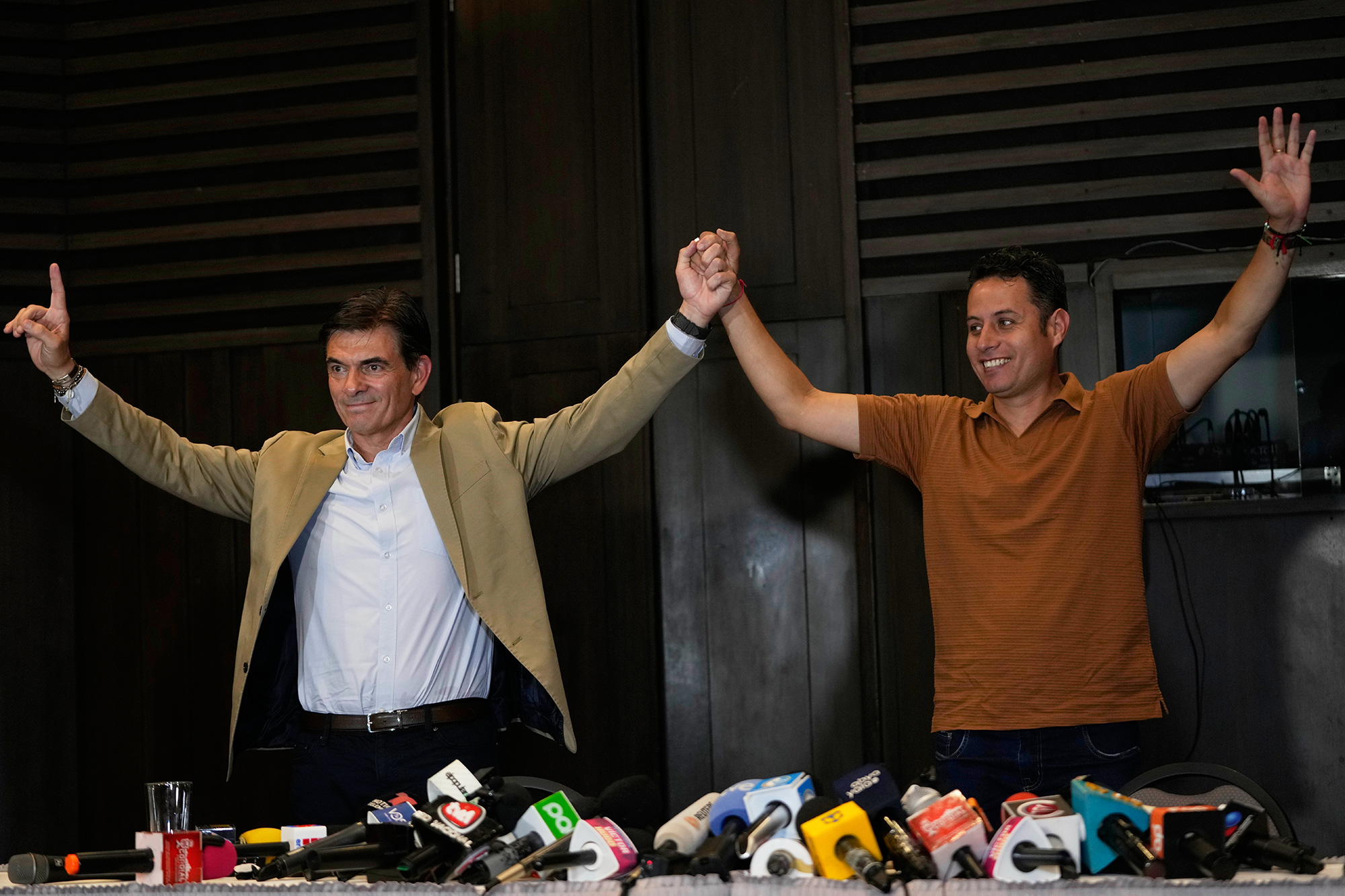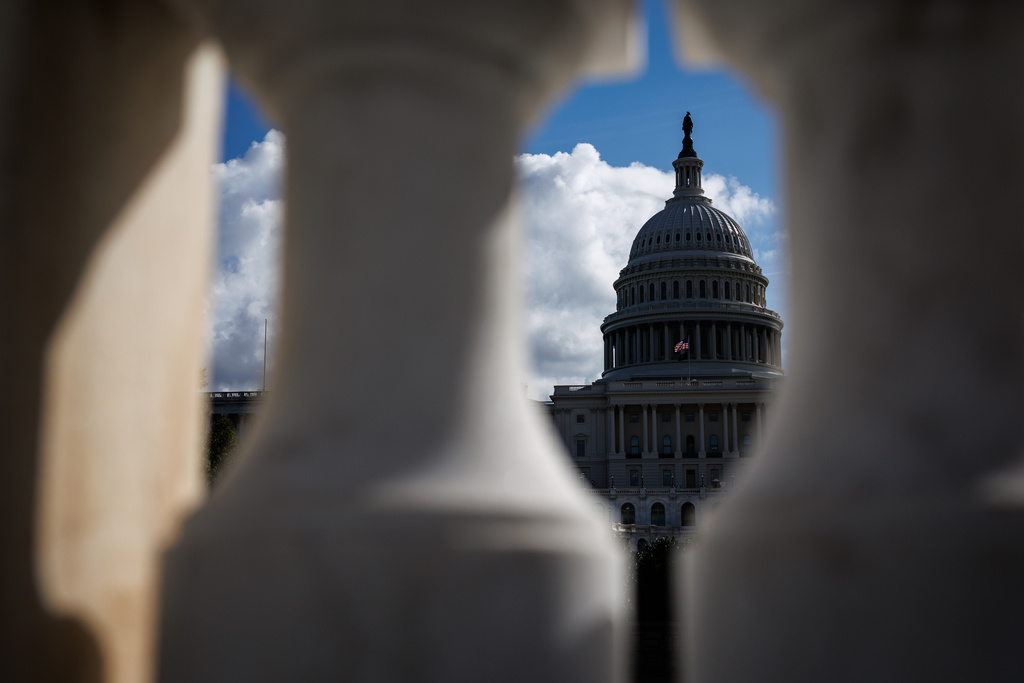What to watch and when to expect results from California, New Jersey, New York, and Virginia.
Voters are heading to the polls today in just a handful of states, but the results may have national implications.
Virginia and New Jersey will pick their next governors, state leaders, and state-legislative representatives. New York City will elect its next mayor. And California will decide whether to approve a new congressional map that could shift the balance of power in Washington.
In advance of the 2026 midterms, today’s results will offer an early indicator of how voters feel about the direction of the country, the strength of both parties, and whether the commonsense majority is finally making its voice heard.
New Jersey and Virginia: Early Signals for 2026
Every four years, New Jersey and Virginia hold governor’s races the year after a presidential election. Both states are competitive enough to make the results matter.
Vice President Kamala Harris carried each state by just five points in 2024, and they’re trending in opposite directions: Virginia has grown steadily bluer, while New Jersey has crept toward purple.
The results won’t predict the midterms perfectly, but the margins can send a message. If Democrats win by much more than Harris did, it’s a warning for the GOP. If Republicans close the gap or flip key suburban counties, it suggests momentum is shifting their way.
The micro-trends will matter most: will Democrats maintain their dominance in the suburbs, and can Republicans continue their recent inroads with working-class and non-white voters?
Money and Momentum in New Jersey and Virginia
Few people outside Trenton or Richmond realize just how much national money flows into these races every four years.
The two main engines driving that spending are the Democratic Governors Association (DGA) and the Republican Governors Association (RGA), the national campaign arms for each party, have turned both states into multimillion-dollar proxy battles.
In New Jersey, total spending is projected to exceed $200 million, making this the most expensive governor’s race in state history. The DGA has funneled about $16 million into its “Greater Garden State” committee, while the RGA has poured roughly $12 million into “Restore New Jersey.”
Virginia’s races have been smaller but still a magnet for outside money. The DGA has spent over $10 million supporting Democrat Abigail Spanberger, while the RGA has put $5 million behind Republican Winsome Earle-Sears. The DGA and RGA are the biggest spenders for both candidates, dwarfing local organizations.
And it’s not just the governor’s race. In Virginia’s three statewide contests today, the national party networks (the Democratic and Republican Governors, Lieutenant Governors, and Attorney Generals Associations) are the single largest spenders for five of the six major candidates. That level of investment underscores how these races are a political testing ground for the midterms ahead.
Who Will Win New Jersey and Virginia?
Heading into Election Day, both contests lean Democratic, but with different degrees of certainty.
Polling averages show Democrat Mikie Sherrill leading Republican Jack Ciattarelli by roughly three points in New Jersey, while Spanberger holds a larger and steadier lead – around ten points – in Virginia. Prediction markets like Kalshi and Polymarket give Democrats about an 85% chance in New Jersey and a 97% chance in Virginia.
The Jay Jones Wildcard
The tightest race in Virginia might not be at the top of the ticket.
The attorney general race has tightened after Democratic nominee Jay Jones was caught in a political violence scandal. In leaked text messages and calls, Jones reportedly said that a local Republican official deserved “two bullets to the head” and that the Republican’s wife should “watch her own child die in her arms.”
Recent polling now shows the attorney general race deadlocked, and betting markets give the Republicans a 57% chance of winning. The day before the texts came out, Jones had an 85% chance of winning.
This episode is a reminder that independent-minded voters are still out there – and that political parties don’t own them. Even in an era of nationalized politics, Virginians appear willing to split their tickets based on character, credibility, or competence. If Jones loses, it will suggest that personal integrity can still outweigh party labels.
When Do Polls Close in Virginia and New Jersey?
Polls open at 6:00AM Eastern time in both states.
New Jersey’s polls close at 8:00PM Eastern, but its large share of mail ballots slows the count. Last time, Governor Phil Murphy’s victory wasn’t officially called until the next afternoon.
Virginia’s polls close at 7:00PM, and results there usually come quicker than New Jersey’s. In 2021, news networks projected Glenn Youngkin’s win shortly before 2:00AM.
If this year’s races are clear-cut, expect Virginia’s results late Tuesday night and New Jersey’s sometime Wednesday morning. The tighter the margins are, the longer it will take to declare a winner. So here’s a good test: if you know the results by the time you go to bed, that’s good news for Democrats heading into 2026.
New York City: The Progressive Test Case
If Virginia and New Jersey test national mood, New York City is testing ideological limits.
Zohran Mamdani, a self-described Democratic Socialist, is the overwhelming favorite to become the city’s next mayor. His rise matters far beyond the five boroughs.
Many progressives view Mamdani’s campaign as a blueprint for Democratic candidates running up and down the ballot in 2026 races. President Trump and other Republican leaders are already painting Mamdani as the new face of the Democratic Party, using his candidacy to paint Democrats in swing districts as soft on crime and socialism. For Democrats in red or purple states, that’s political quicksand.
A Mamdani win would also mark the first time America’s largest city is led by a member of the Democratic Socialists of America, a group that calls for abolishing ICE, withdrawing from NATO, and rewriting the U.S. Constitution. Those aren’t fringe student ideas – they’d be coming from City Hall.
New York Goes National
The mayoral race has drawn more than $65 million in combined candidate fundraising and another $20+ million in outside PAC spending.
But not all of it is coming from the Big Apple. Both Mamdani and his main rival Andrew Cuomo have received over a third of their funding from outside of New York City.
The endorsement race is national, too. Texas resident Elon Musk endorsed Cuomo, while Mamdani is backed by Sens. Bernie Sanders of Vermont, Elizabeth Warren of Massachusetts, and Chris Van Hollen of Maryland. Even the West Coast is weighing in: VP Kamala Harris endorsed Mamdani all the way from California.
Will Mamdani Win?
Bettors on Polymarket and Kalshi give Mamdani a 90% chance of winning today. And for good reason: he’s led in virtually every single poll since winning the primary, usually by a double-digit margin.
The real question is if he will earn a majority of the vote. In 33 of the 36 polls tracked by the New York Times, Mamdani has been supported by less than half of NYC voters. Even as the frontrunner, he hasn’t truly consolidated the city behind him so far.
What Time Do Polls Close in New York City?
Polls are open across New York City from 6:00AM to 9:00PM Eastern time, with first returns expected soon after polls close.
Last time, Eric Adams was declared the winner just minutes after polls closed. It could take a little bit longer this time around, but there’s a good chance you’ll know the winner by bedtime.
California: Redrawing the Map
California voters will also make a decision today that could reshape the balance of power in Congress. On the ballot is an amendment to let the state legislature draw a new map of Congressional districts, one that’s more favorable to Democrats.
Experts believe the new California map, if approved, will gain Democrats three to five more seats in next year’s House elections, enough to offset the gains Republicans made by redrawing Texas’s map earlier this year.
These days, House majorities are often so small that just a few seats could change the balance of power on Capitol Hill. California’s vote could very well determine who holds the gavel in 2027.
California is just the latest battle in the redistricting war. In addition to Texas, Republican legislators redrew the maps in Missouri, North Carolina, and Ohio. Democratic leaders are pressing for Illinois, Virginia, and Maryland to do the same.
National Interest in California
Much like the other contests today, leaders and donors from across the country have taken a keen interest in California’s ballot measure. Roughly 60 percent of all spending for and against the proposal has come from out of state.
Rep. Alexandria Ocasio-Cortez and billionaire George Soros – both based in New York – have been major backers of the campaign to pass the new map. Former President Barack Obama and President Trump have also weighed in, albeit on opposite sides of the debate, underscoring how nationalized even a state-specific issue like redistricting has become.
The attention and money pouring in from across the political spectrum show that this isn’t just a California story. The outcome could decide which party controls the U.S. House and set the tone for future fights over gerrymandering nationwide.
Will California Pass a New Map?
According to Politico, Republicans “have all but abandoned their efforts to defeat” today’s measure.
Public polls show the measure widely expected to pass, with support in the mid-50s to low-60s depending on the survey. And betting markets give it a 97% chance of passing.
Don’t stay up too late watching this one.
What Time Do Polls Close in California?
Polls close at 8:00PM Pacific time, which is 11:00PM here on the East Coast.
And California is notoriously slow at counting ballots. It could take days to know the final results, but the initial returns should give a pretty clear indication where things are headed.
Related
Peyton Lofton
Peyton Lofton is Senior Policy Analyst at No Labels and has spent his career writing for the common sense majority. His work has appeared in the Washington Examiner, RealClearPolicy, and the South Florida Sun Sentinel. Peyton holds a degree in political science from Tulane University.




